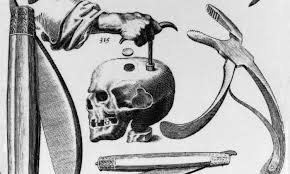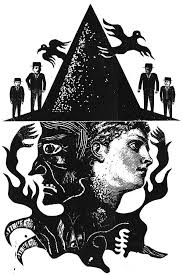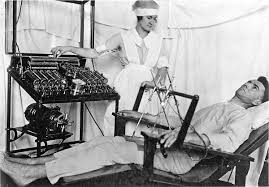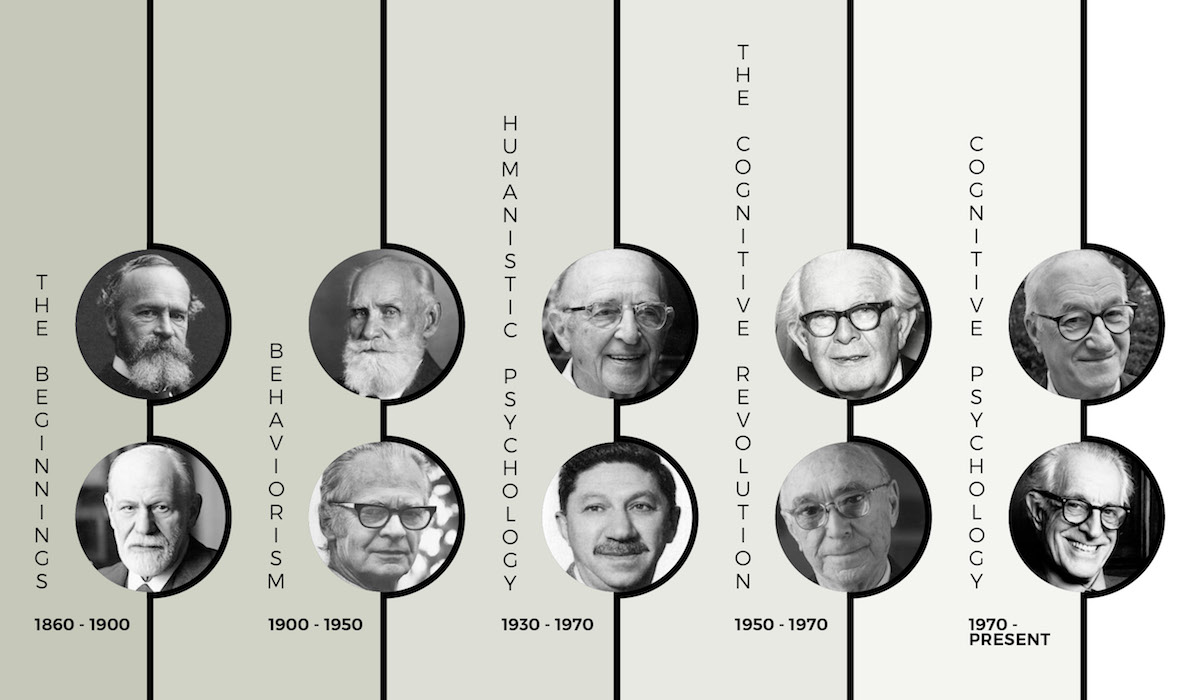Mental Disorders

I am currently a history major and a psychology minor at the University of New Mexico (UNM). That being said, I plan to combine the two disciplines in the charting of mental disorders as they have been medically perceived, and historically recorded throughout time. The first historical record of mental disorders dates back 10,000 years, however, I will primarily focus from 400 B.C., to the present. Being that I cannot possibly include every recorded episode, I will provide the most significant examples that were, and are, widely accepted. The academic values within these works are intended to summarize and educate the readers on mental disorders throughout the majority of documented history, as well as why it is important that these areas continue to be researched and developed.This essay will provide a concise historiography of mental disorders that incorporates perceived causalities, as well as the treatments, as both progress through documented history.

The documented history of mental disorders dates back over the last “10,000 years, with the timeline holding evident through evidence of Trephination throughout Europe” (Pitsios,239). With more than “200 skulls being found from Scandinavia to the Balkans” (Pitsios,239). This ancient technique was the first surgical operation and served numerous purposes. It’s evolution through the periods advanced the technical means, knowledge, and therapeutic needs as time elapsed. “Hippocrates was the one to classify for the first time the kinds of cranial fractures and define the conditions and circumstances for carrying out trepanning” (Pitsios,239). The historiographical challenge in charting how historians wrote about mental disorders is that they did not until the late 19th, and early 20th centuries. This being said, I derived my historiographical information from theories and models of behavior that were practiced at the time.
“In 400 B.C. Hippocrates suggested that mental disorders are caused by both biological and psychological attributes” (Barlow,30). Hippocrates, also known as Hippocrates II, was a Greek physician, who is considered one of the most outstanding figures in the history of medicine, as well as “the father of western medicine” (Barlow,14). It is evident that during this place in time mental disorders were thought to be cured by the drilling of holes, through specific parts of the skull, allowing the pressure to be released along with any bad spirits. However, during the “18th and 19th century, trephination operations had been rejected as a therapeutic surgical method, due to the high mortality that reached 100% at the time” (Pitsios,240). The way in which mental disorders were perceived during this period may seem barbaric and brutal to us now, but at the time, this method was the most advanced surgical treatment and served as the platform from which psychological research would springboard.
In 200 A.D. Galen, a Roman physician adopted and incorporating Hippocrates ideas which created a long-lasting school of thought throughout the field of psychopathology. He suggested that normal and abnormal behaviors are related to four bodily fluids, or humors. These fluids/humors needed to be maintained at specific levels in order for people to function ‘normally’. The four Humors include choleric (yellow bile, fire), melancholic (black bile, earth), sanguine (blood, air) and phlegmatic (phlegm, water). This biological tradition would continue into the 19th century. The avenues by which those of this time perceived mental disorders were primitive, but progressing. The advancement in thought, practice, and knowledge lead those of this time period to build on certain aspects, as well as rid others. With the belief that mental disorders were purely caused by physiological aspects, thinkers of this period would rest upon the biological tradition practiced over the past few hundred years.

The documented history of mental disorders seems to have taken about a nine-hundred-year hiatus, as the timeline did not pick up again until the 1300s. Due to the lack of focus from historians, the majority of the information within these works is derived from those within the medical and psychologic fields, as they were the only people documenting on this topic. Mental disorders in this period are blamed on demons and witches. Superstition was widespread, with exorcisms being performed to rid victims of ‘evil spirits’. In the “late Middle Ages, mental illness was not recognized as such. Instead, the mentally disturbed were accused of witchcraft” (Spanos,417). In the late 14th century, religious powers in charge began supporting these superstitions due to their rising popularity amongst European society.
At this place in time mental disorders were not directly documented as being such, however, indirectly related, books on witches were published. ‘The Malleus Maleficarum, or in Latin, The Hammer of Witches’, was written by Heinrich Kramerin 1486. The book’s main purpose was to challenge all arguments against the existence of witchcraft and to instruct magistrates on how to identify, interrogate and convict witches. A century later in 1580, Jean Bodin would publish ‘On the Demon-Mania of Witches, or in Frecnh, De la démonomanie des sorciers’. So at this point in the history of thought concerning mental disorders is that they were not to blame for abnormal/deviant behavior, instead, witchcraft would be the culprit.
Witches and demons were thought to have possessed those who’s bizarre behaviors exhibited by those who were mentally ill, were actually viewed as the work of the devil. The treatments for these mental disorders leaned on religion alone to cure the individuals. With “exorcism, in various religious rituals were performed in an effort to rid the victim of evil spirits. Shaving the pattern of the cross in the hair on the victims head, and securing sufferers to a wall near the front of the church so that they might benefit from hearing Mass” (Barlow,10). These superstitions carried their way through the next few centuries. As the causality of evil and madness were blamed on witchcraft and sorcery in the 15th century. This ‘causality’ even spilled its way across the Atlantic, as “evident by the Salem, Massachusetts witch trials in the late 17th century which resulted in the hanging deaths of numerous women” (Barlow,10). Due to the fact that most accused of having these powers and or possessions would openly admit to “having carried out impossible acts such as flying through the air, they were deluded, and probably many were schizophrenic” (Spanos,417).
The treatment for possession that was unrelated to religion was even stranger, especially at first glance. One treatment was to “suspend the possessed person over a pit full of poisonous snakes so that it might scare the evil spirits right out of their bodies” (Barlow,11). Oddly enough, sometimes this tactic/treatment actually took effect. “Strange behaving individuals would suddenly come to their senses and experience relief from their symptoms, even if only temporarily” (Barlow,11). Other treatment methods consisted of “dunking the person(s) in ice-cold water” as an element of shock (Barlow,11). In the 1500’s Paracelsus, a Swiss physician and astrologer was a pioneer in several aspects of the medical revolution of the Renaissance. He proposes that it is not the devil or evil spirits that affect people’s psychological functioning, but instead, the moon and the stars. From 1400-1800 those thought to have mental disorders were also treated by bloodletting and leeches to rid the body of unhealthy fluids and restore the chemical balance.
The biological school of thought continued to “wax and wane during the times of Hippocrates and Galen but was reinvigorated in the 19th century because of two factors” (Barlow,14). One, the discovery and causation of syphilis, and two, strong support from the most influential American psychiatrist at the time, John P. Grey. He is considered “the champion of the biological tradition in the United States” (Barlow,14). John P. Grey was the head of New York’s Utica Hospital. He believed that insanity was caused by physical attributes, which de-emphasized the psychological treatments. The fields of psychopathology, psychology, and psychiatry were now heading in a scientific direction, whereas before, they had been seen as spiritual in both causalities, and treatment. This giving way to moral therapy.
In 1793 Philippe Pinel, a French physician who was highly influential in the development of a more humane psychological approach to the care and safekeeping of psychiatric patients, which is more commonly known in the present as moral therapy. He introduces moral therapy and implicates more humane practices in French mental institutions. “In the 19th-century mental disorders were attributed to mental or emotional stress, so patients were often treated sympathetically in a restful and hygienic environment” (Barlow,17). This new approach was quite the dichotomy from the previous practices.
In 1848 Dorothea Dix, as an American advocate for the mentally ill who fought through lobbying state legislatures and the United States Congress, helped to create the first generation of American mental asylums which successfully campaigns for humane treatment in U.S. mental institutions. Thus far in the history of mental disorders, documentation has conveyed the ways in which these issues are perceived and dealt with. For the first time in the field of mental disorders, the belief that patients needed not only treatment, but they also needed compassion to be incorporated. This shift in thought is drastic from the topics predecessors but would prove to be a vital component through the present.
Another aspect of this time period that is important to the applicable fields is Emil Kraepelin, one of the founding fathers of modern psychiatry publishes work on diagnosis, classifying numerous psychological disorders from a biological perspective. Prior to this, diagnosis, classification, and stratification had not yet been incorporated. Actual ‘words’ could be assigned to behaviors, which would then convey the combined symptoms into separate and specific areas. Another huge step in the ‘progressive’ direction for psychologists that would be a lasting, and impactful.
Across the globe, numerous individuals began to develop different hypothesis, theories, and new branches of the field of mental disorders. In 1900 Sigmund Freud, an Austrian neurologist and the founder of psychoanalysis, which is a clinical method for treating psychopathology through dialogue between a patient and a psychoanalyst published ‘The Interpretation of Dreams’. While in 1904 Ivan Pavlov, a Russian physiologist known primarily for his work in classical conditioning received the Nobel Prize due to his studies on the physiology of digestion. In the viewpoint of behavioral psychologists, those who suffered from certain mental disorders could be treated with Pavlov’s classical conditioning. Those of this time began practices of altering psychosis of numerous avenues through acts of conditioning and extinction.
Behaviorism would be coined by John B. Watson, an American psychologist who established the psychological school of behaviorism. He indorsed a change in psychology through his speech about Psychology as the Behaviorist Views it, which he gave at Columbia University in 1913. In 1920 John B. Watson’s ‘Little Albert’ experiments dealing with conditioned fear, through the use of operant conditioning. This was the term coined later by B.F. Skinner in 1938. He elaborates on the principals of operant conditioning through his publishing of The Behavior of Organisms-which reinforcement and shaping were used in order to ‘correct’ the behavior of an individual.

Going slightly back in time to 1930, electric shock treatments as well as brain surgery, began to be used to treat psychopathology. Other than psychosurgery such as trephination, ECT is the most controversial treatment for mental disorders. The ideas for this go back even further, but so as to not have disrupted the continuity of Behaviorism I jumped around in my chronology. Benjamin Franklin “accidentally discovered, and then confirmed experimentally in the 1750s, that a mild electric shock produced a brief convulsion and memory loss, but otherwise did little harm. Soon then after, a friend of Franklin, a Dutch physician proposed that this shock may serve as a treatment for depression. Going from drilling holes in people’s heads through the act of Trephination, to shocking people in order to ‘cure’ them from their mental disorder only took two millennia. Although, the later would eventually gain traction.
In the 1950s mental hospitals began to incorporate the practice of electric shock therapy, however, they used it more as a tool for obedience and abuse than a cure for mental disorders. In present-day practices of ECT electroconvulsive therapy patients are anesthetized to reduce discomfort and given muscle-relaxing drugs to prevent bone-breaking from the convulsions during the seizures. The way in which these seizures are said to help those who suffer from depression is as follows. ECT increases levels of serotonin blocks stress hormones and promotes neurogenesis in the hippocampus. Basically, it gives the individual more happy/feel-good chemicals/neurotransmitters, blocks the negative chemicals, and regrows/revitalizes parts of our brain that deal with emotion, it just took two and a half centuries to get it right (Barlow).
Finally, published historiographic information on mental disorders. The International Statistical Institute adopted the first International Classification of Diseases (ICD) in 1893. In 1952 the first edition of the Diagnostic and Statistical Manual (DSM-1) is published in the United States. As the years progressed, both have revised, and continue to expand their classifications through multiple editions. The ICD-10 is the most current globally, while the DSM-5 is used primarily in the United States. These manuals classify how mental disorders were thought about at the time of their publishing. As the manuals progress, so do the ways in which people perceive mental illness.
The studies in mental disorders today, discuss whether these disorders are innate, or learned, essentially using the primitive nature of this topics founding beliefs, ‘biological or physiological’ causation. One of the most studied areas in the field of mental disorders currently is psychopathy. Those most concentrated on are criminal offenders. With them in mind, treatment programs have been developed, as well as professionally accepted ways f diagnosis. This only adds to the fire of confusion when it comes to mental disorders, being that those who have received ‘treatment’, for psychopathy prove more likely to re-offend. Current psychologists predict that microchips will be developed and installed in specific locations of the brain in those diagnosed with psychopathy. This would allow them to function ‘normally’, but changing the neural-wiring of these individuals. This then brings into question, the moralistic, or ethical speculation of this hypothetical practice. Everything stated in this paragraph can be cited to (Hare).
Research has shown through the 22 point scale of Robert Hare, that significant leaders in global society portray traits of psychopathy. The highest, and worst score is equated 40, whilst the minimum requirement for an individual is a score of 26 to be diagnosed as a psychopath. According to a study done at Oxford University by Dr. Kevin Dutton, “Donald Trump scored slightly higher than Adolf Hitler on this scale, and, Hillary Clinton scored between with Napoleon Bonaparte and Nero”. These mental disorders are apparently, not always equivalent to a negative prerogative depending on the political and societal structures they exist in.
Mental disorders throughout history, and into the present, continue to be researched and developed in vastly different ways, however, “the history of psychiatry teaches us to doubt it, by emphasizing the infinitely variable and fluctuating character of psychiatric entities” (Borch-Jacobsen,19). It is much like the rest of the categories studied by historians, paradoxical and dizzyingly contradicting. We as future historians must be aware of these aspects in order for progress to ensue. “The idea that emotional reactions occur reflexively and involuntarily in response to internal and external stimuli persists in the present and continues to make possible and plausible the concept of mood disorders” (Jansson,399).

Bibliography
(1)Barlow, Durand, Hofmann. Abnormal Psychology An Integrative Approach. 8th ed., Cengage Learning, 2018.
(2)Borch-Jacobsen, Mikkel; History of the Human Sciences, Vol 14(2), May, 2001 pp. 19-38. Publisher: Sage Publications; [Journal Article], Database: PsycINFO
(3)Jansson, Asa. “Mood Disorders and the Brain: Depression, Melancholia, and the Historiography of Psychiatry.” Medical History 55, no. 3 (2011): 393–99. doi:10.1017/S0025727300005469.
(4)Pitsios, Theodoros, and Vasiliki Zafiri. 2012. “Cases of Trephination in Ancient Greek Skulls.” International Journal of Caring Sciences 5 (3): 239–45. https://search.ebscohost.com/login.aspx?direct=true&db=ccm&AN=104502198&site=eds-live&scope=site.
(5)Spanos, Nicholas P. 1978. “Witchcraft in Histories of Psychiatry: A Critical Analysis and an Alternative Conceptualization.” Psychological Bulletin 85 (2): 417–39. doi:10.1037/0033-2909.85.2.417.
(6)Hare, Robert D. 2016. “Psychopathy, the PCL-R, and Criminal Justice: Some New Findings and Current Issues.” Canadian Psychology. https://search.ebscohost.com/login.aspx?direct=true&db=edsbl&AN=RN605837062&site=eds-live&scope=site.
2805 words. /essays/thematic/mentaldisorders.html